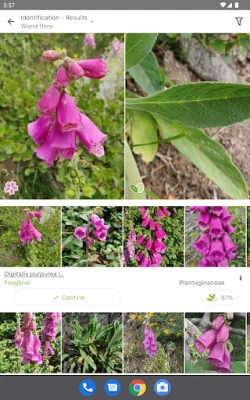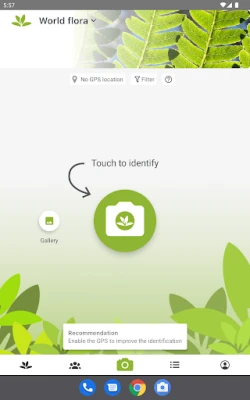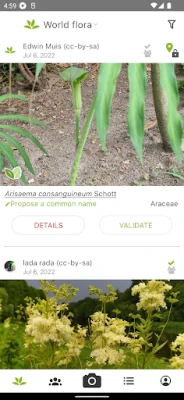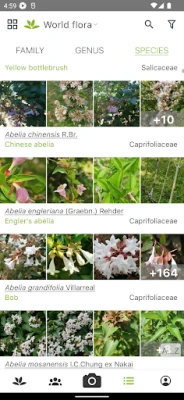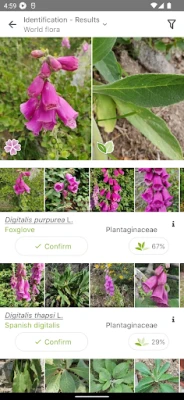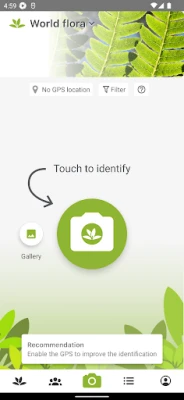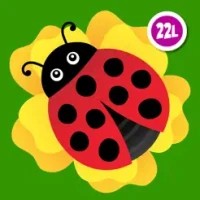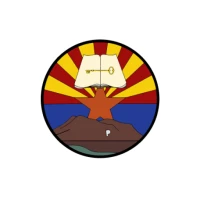
Latest Version
3.21.5
February 20, 2025
PlantNet
Education
Android
0
Free
org.plantnet
Report a Problem
More About PlantNet Plant Identification
Unlocking Nature's Secrets: How Pl@ntNet Revolutionizes Plant Identification
In a world where nature's beauty often goes unnoticed, Pl@ntNet emerges as a powerful tool for plant enthusiasts and casual observers alike. This innovative application enables users to identify and gain a deeper understanding of various plant species found in the wild, including flowering plants, trees, grasses, conifers, ferns, vines, wild salads, and cacti. While Pl@ntNet can also recognize cultivated plants in parks and gardens, its primary focus lies in cataloging the wild flora that surrounds us, from the greenery in our backyards to the resilient plants growing through cracks in city sidewalks.
Enhancing Identification Accuracy with Visual Data
The accuracy of plant identification through Pl@ntNet significantly improves with the quality and quantity of visual information provided by users. Many plant species share similar appearances, and often, it is the subtle details that differentiate them. To enhance identification, users should prioritize photographing the most distinctive features of a plant, such as:
- Flowers: The color, shape, and arrangement can be crucial for identification.
- Fruits: The size, texture, and color of fruits can provide key insights.
- Leaves: Leaf shape, size, and arrangement are vital characteristics.
Additionally, capturing images of other notable features, such as thorns, buds, or hair on the stem, can further aid in accurate identification. While a full plant photograph is beneficial, it may not always suffice for reliable identification.
A Growing Database of Plant Species
Currently, Pl@ntNet boasts the capability to recognize approximately 20,000 plant species. Although this number is a fraction of the estimated 360,000 species on Earth, the platform is continually expanding, thanks to contributions from knowledgeable users. By sharing your observations, you can play a vital role in enriching the database. Each submission undergoes community review, and your contributions may eventually be featured in the application’s extensive photo gallery.
Exciting New Features in the Latest Version
The latest update of Pl@ntNet, released in January 2019, introduces a host of enhancements and new functionalities designed to improve user experience:
- Species Filtering: Users can now filter recognized species by genus or family, making it easier to navigate through the vast array of plants.
- Data Revision System: This feature assigns greater weight to contributions from users who have demonstrated expertise, particularly those with a high number of validated observations.
- Re-identification of Observations: Users can revisit and re-identify their shared observations, enhancing the accuracy of the database.
- Multi-Flora Identification: This allows users to search for a photographed plant across all available flora in the application, rather than being limited to a selected category.
- Favorite Floras: Users can now select their preferred floras for quicker access, streamlining the identification process.
- Taxonomic Navigation: The application now supports navigation through different taxonomic levels within image galleries.
- Observation Mapping: Users can map their observations, providing a visual representation of their findings.
- Access to Factsheets: The app includes links to numerous factsheets, offering detailed information about various species.
Explore Pl@ntNet Online
For those who prefer a web-based experience, Pl@ntNet is also accessible through its online platform at https://identify.plantnet.org/. This version offers the same powerful identification tools and resources, making it easy to explore the world of plants from the comfort of your computer.
Join the Community and Contribute
Pl@ntNet thrives on community engagement. By participating in the identification process, you not only enhance your own knowledge but also contribute to a collective understanding of plant biodiversity. Don’t hesitate to share your observations and insights; your input is invaluable in the ongoing effort to catalog the world’s flora.
Conclusion: Embrace the Beauty of Nature
In conclusion, Pl@ntNet is more than just an identification tool; it is a gateway to understanding and appreciating the rich diversity of plant life around us. Whether you are a seasoned botanist or a curious nature lover, this application empowers you to explore, learn, and contribute to the preservation of our planet's botanical heritage. Start your journey today and unlock the secrets of nature with Pl@ntNet!
Rate the App
User Reviews
Popular Apps

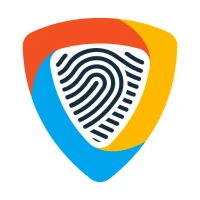








Editor's Choice











